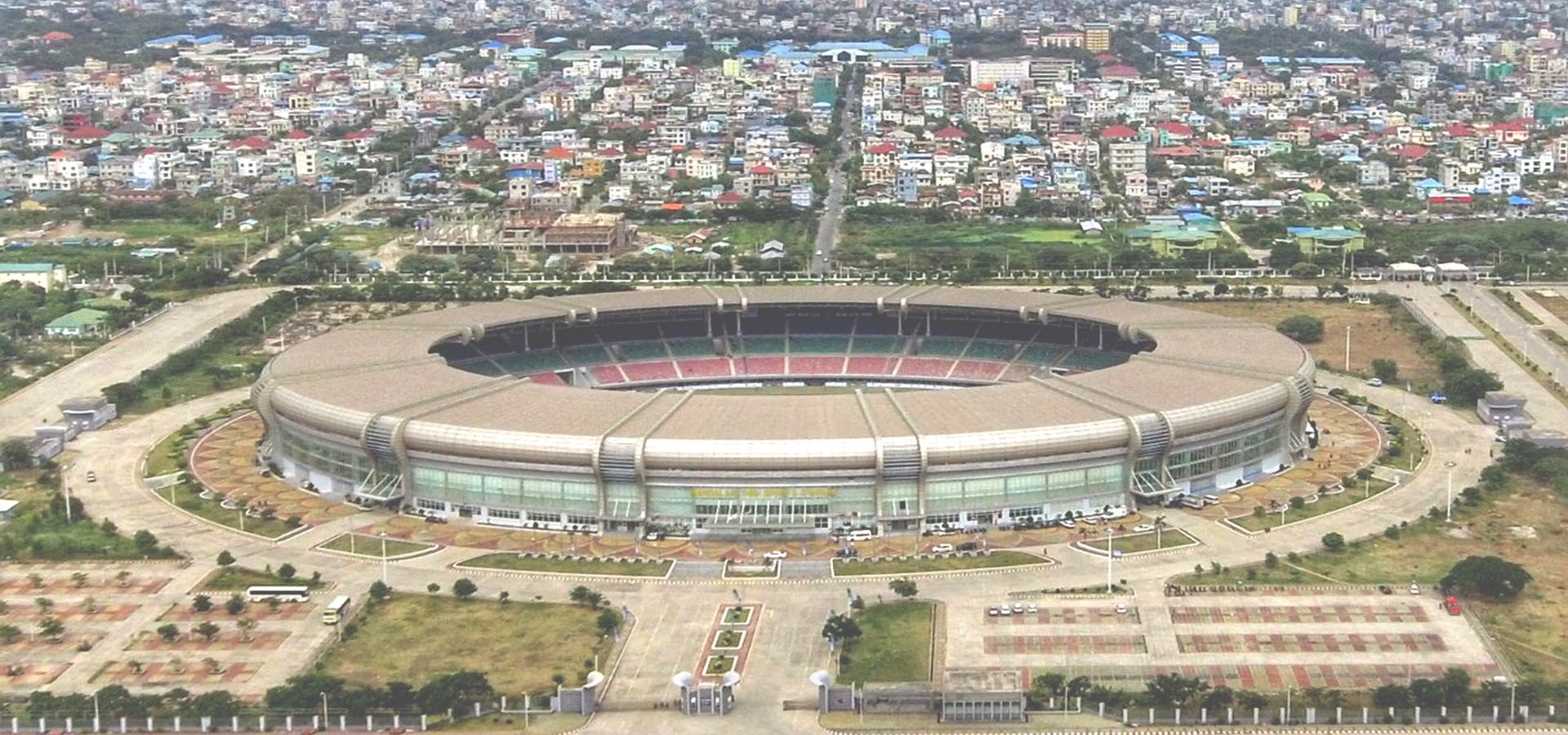Pyinoolwin, Mandalay Region, Myanmar
🇲🇲 Pyin Oo Lwin or Pyin U Lwin or Pyinoolwin, formerly and colloquially referred to as Maymyo, is a scenic hill town in the Mandalay Region, Myanmar, some 67 km (42 mi) east of Mandalay, and at an elevation of 1,070 metres (3,510 ft).
1Etymology • Pyin Oo Lwin (ပြင်ဦးလွင်) • Maymyo (မေမြို့) • Taung Hlay Khar (တောင်လှေခါး) ('hillside stairs') • Taung Sa Kan (တောင်စခန်း) ('hill station') and the best-known name, Pan Myo Taw ('city of flowers) • Remyo (historically).
1History The town began as a military outpost established near a small Shan village with two dozen households on the Lashio-Mandalay trail between Nawnghkio and Mandalay. In 1897, a permanent military post was established in the town and later, because of its climate, it became a hill station and the summer capital of British Burma. The establishment in Burma (civil, commercial and military) would move to Maymyo during the hot season to escape from Rangoon's high heat and humidity. During British rule and through the 1970s, Maymyo had a large Anglo-Burmese population, but this steadily declined. During the Japanese occupation, as many Anglos were concentrated in and around Maymyo, the Japanese incarcerated many of them for fear of their loyalty to the British very close to Maymyo. Today, Maymyo still has one of the country's larger populations of Anglo-Burmese. The British named the location Maymyo, literally 'May's Town' in Burmese, after Colonel May, a veteran of the Indian Rebellion of 1857 and commander of the Bengal Regiment temporarily stationed in the town in 1887. The military government of Burma renamed the town Pyin U Lwin, the word-for-word Burmese transcription of the Shan "City (ဝဵင်း, Weng⁴) of Paang²uu⁴ (ပၢင်ႇဢူး)".
The area is also the site of the decisive battle of Maymyo where the Burmese royal army under Maha Thiha Thura defeated the Chinese Army in the third invasion during the Sino-Burmese War of 1765–1769.
1Demographics The town has approximately 10,000 Indian and 8,000 Gurkha inhabitants who settled in Maymyo during British rule. Today, Pyin Oo Lwin has a thriving Eurasian community, consisting mostly of Anglo-Burmese and Anglo-Indians. There is also a diverse mix of Chinese, Chin, Kachin, Karen, Shan, Bamars (Burmese) and communities.
1Economy Sweater knitting, flower and vegetable gardens, strawberry and pineapple orchards, coffee plantations and cow rearing are the main local businesses. There has been an influx of Chinese immigrants (especially from Yunnan) in recent years. The city is a resort town for visitors from Myanmar's major cities during the summertime and a popular stop for foreign tourists during the winter season.
Established in 1915, the National Botanical Gardens and the adjacent Pyin Oo Lwin Nursery are attractions of Pyin Oo Lwin. A 4-acre (16,000 m²) orchid garden is planned for 2007.
Today, Pyin Oo Lwin is noted as four centres of national economic importance. It is the centre of sericulture (silkworm rearing). The Sericulture Research Centre, near the National Kandawgyi Botanical Gardens, has three distinct roles: the intensive planting and harvesting of mulberry trees (leaves for the silkworms, bark for handmade paper), the rearing of silkworms, and the reeling of the silk from the cocoons. It has a large research centre for indigenous medicinal plants. It has one of the country's few pharmaceutical production facilities.
Pyin Oo Lwin is the centre of the country's flower and vegetable production. The most important flowers grown intensively are chrysanthemum, aster and gladiolus, which are exported to every corner of Myanmar throughout the year. Lastly, Pyin Oo Lwin is the centre of Myanmar's rapidly growing coffee industry. Several factories in the town process coffee beans for country-wide distribution and export.
1Asia/Yangon/Mandalay_Region

Pyinoolwin has a population of over 255,000 people. Pyinoolwin also forms part of the wider Mandalay Region which has a population of over 6,165,723 people.
To set up a UBI Lab for Pyinoolwin see: https://www.ubilabnetwork.org Twitter: https://twitter.com/UBILabNetwork
🇲🇲 Pyin Oo Lwin 22.033
🇻🇳 Tuyên Quang 22.113
🇮🇳 Sundargarh 22.12
🇲🇽 San Luis Potosí 22.131
🇲🇽 San Luis Potosí City 22.131
🇨🇺 Manicaragua 22.149
🇨🇺 Cienfuegos 22.15
🇲🇽 Ciudad Valles 21.983
🇲🇽 Jesús María 21.967
🇨🇺 Sancti Spíritus 21.933
🇲🇽 Aguascalientes 21.882
🇮🇩 Lhokseumawe 97.133
🇲🇲 Mawlamyine 97.617
🇮🇩 Teluk Dalam 97.8
🇹🇭 Mae Hong Son 97.95
🇹🇭 Phuket City 98.344
Locations Near: Pyinoolwin 96.4676,22.0333
🇲🇲 Pyin Oo Lwin 96.468,22.033 d: 0
🇲🇲 Mandalay 96.086,21.968 d: 40
🇲🇲 Naypyidaw 96.196,19.737 d: 256.9
🇲🇲 Nay Pyi Taw 96.115,19.748 d: 256.8
🇹🇭 Mae Hong Son 97.95,19.283 d: 342.5
🇮🇳 Imphāl 93.942,24.809 d: 402
🇹🇭 Chiang Rai 99.828,19.909 d: 421.2
Antipodal to: Pyinoolwin -83.532,-22.033
🇵🇪 Pisco -76.2,-13.717 d: 18808.5
🇵🇪 Ica -75.733,-14.067 d: 18805.5
🇵🇪 Chincha Alta -76.133,-13.45 d: 18780.8
🇵🇪 Callao -77.15,-12.067 d: 18716.2
🇵🇪 Miraflores -77.033,-12.117 d: 18714.5
🇵🇪 San Borja -77.017,-12.1 d: 18712
🇵🇪 San Isidro -77.033,-12.083 d: 18711.3
🇵🇪 Lima -77.033,-12.05 d: 18708.1
🇵🇪 Villa El Salvador -77,-12.05 d: 18706.3